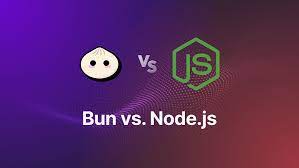Bun vs Node.js: Should You Switch Your Backend in 2025?
2025 has been a turning point for JavaScript runtimes. Bun, the all-in-one JavaScript runtime, bundler, and test runner, has grown from an interesting project to a serious contender to Node.js. But should you switch your backend from Node to Bun?
Here’s what’s new and noteworthy:
1. Lightning-Fast Performance:
Bun is written in Zig and is significantly faster at cold starts, file operations, and dependency resolution. For serverless and microservice environments, this is a game changer.
2. All-in-One Tooling:
No more juggling tools like Webpack, Babel, Jest, or esbuild. Bun includes:
A built-in bundler
A native test runner (bun test)
Out-of-the-box TypeScript and JSX support
Super-fast bun install for dependency management
3. Compatibility:
Bun aims for high compatibility with the Node.js ecosystem. It now supports most node_modules, npm packages, and common APIs like fs, http, and more.
4. Better DX (Developer Experience):
Faster feedback loops, zero-config startup, and minimal boilerplate make Bun especially appealing for startups and solo developers looking to ship quickly.
But beware...
Some edge-case packages (especially native ones) still rely on Node internals.
The ecosystem and community are growing, but not yet as vast as Node.js.
Conclusion:
If you're building a new project in 2025, especially one focused on speed, Bun might be the better choice. For large legacy systems, you might want to wait a little longer — but Bun is definitely worth watching.

